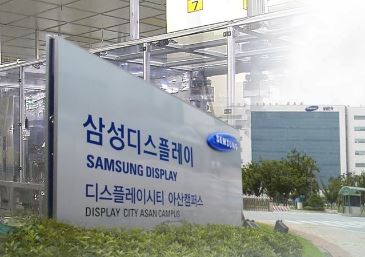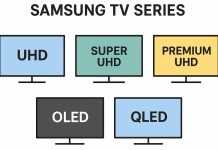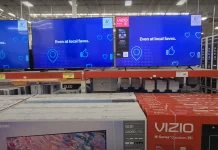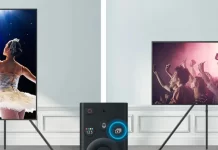In late 2019, Samsung announced that it would stop producing standard LED panels for TVs by 2020. For consumers, this meant that all LED and QLED TVs would be equipped with screens supplied by third-party manufacturers. Samsung is reportedly in talks with LG, AUO, CSOT and BOE to buy displays for its TVs. But due to the COVID pandemic, the sale of the LED panel factory was delayed and eventually Samsung’s LED panel factory was sold to CSOT (China Star Optoelectronics Technology), which we know by the TCL brand, in 2021.
Why did Samsung stop producing LED displays?
This decision reflects the dynamics of the market. Samsung had been buying LED panels from other manufacturers for years. The rapid expansion of LED panel production, especially in China, has significantly lowered display prices, making Samsung’s own LED panels less competitive. In addition, the technology has run out of steam; despite innovations such as Dual LED or Mini LED, these are still standard LED panels.
Samsung’s new display strategy
As a leader in display technology alongside LG, Samsung intends to maintain its innovative edge. In recent years, the company has invested in several advanced display technologies:
MicroLED displays: they’re good, but they’ll need about five more years of refinement before they’re ready for mass production. But they’ll likely never make it to the consumer market because they’re expensive – few people can buy a $100,000 TV.
OLED displays: this is the future of technology for TVs, so Samsung is putting resources into OLED technology by developing its own OLED technology called QD-OLED. It’s essentially OLED, but made with a different technology. Production of the panels started in 2021, and Samsung started selling its first QD-OLED TVs in 2022.
New plants and future targets
To produce OLED panels Samsung has built new plants in Korea, according to Korean publications at the first stage Samsunng faced problems with defects in the production of panels, which reached 20%. Whether Samsung was able to solve this problem, it is not known, but in 2024, some models of Samsung OLED TVs began to be completed with displays from LG. The main reason is that Samsunng was not able to increase production to the required quantity.
Now for the consumer we can say the following, all LED and QLED TVs that Samsung produces have third party screens, OLED TVs in 2024 are bundled 50/50. The TV market is very competitive, TCL and Hisense are very big players in LED TVs. In turn, Samsung is betting on OLED while continuing to produce LED TVs. This situation can be compared to the early 2000s, when CRT technology became obsolete and was replaced by large plasma TVs.






